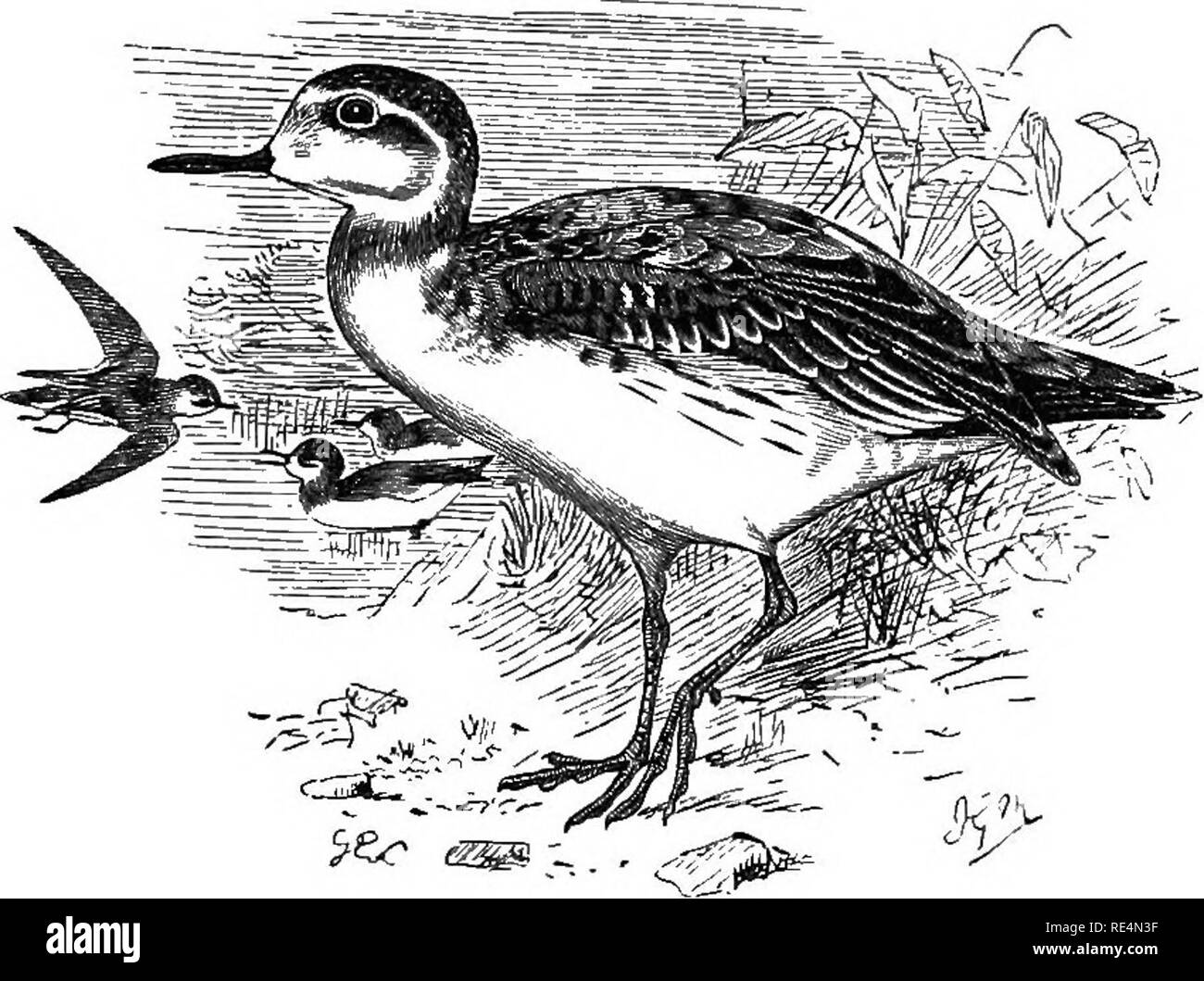. The geographical distribution of the family Charadriidae, or, The plovers, sandpipers, snipes, and their allies . Shore birds. PHALAEOPTJS. No local races of this species are known. 339 Tringa fiilicaria, Linneus, Syst. Nat. i. p. 148 (1758) ; Linn. Syst. Nat. i. p. 249 (1766). Phalaropus phalaropus, Brisson, Orn. vi. p. 13 (1760, winter plumage). Phalaropus rufescens, Brisson, Orn. vi. p. 20 (1760, summer plumage). Phalaropus lobatus [Linn.), apud Tunstall, Orn. Brit. p. 3 (1771). Phalaropus rufus, Bechstein, Naturg. Deutsclil. ed. 2, iv. p. 381 (1809). Phalaropus platyrhynchus, Temminck, M

Image details
Contributor:
The Book Worm / Alamy Stock PhotoImage ID:
RE4N3FFile size:
7.1 MB (431.3 KB Compressed download)Releases:
Model - no | Property - noDo I need a release?Dimensions:
1830 x 1365 px | 31 x 23.1 cm | 12.2 x 9.1 inches | 150dpiMore information:
This image is a public domain image, which means either that copyright has expired in the image or the copyright holder has waived their copyright. Alamy charges you a fee for access to the high resolution copy of the image.
This image could have imperfections as it’s either historical or reportage.
. The geographical distribution of the family Charadriidae, or, The plovers, sandpipers, snipes, and their allies . Shore birds. PHALAEOPTJS. No local races of this species are known. 339 Tringa fiilicaria, Linneus, Syst. Nat. i. p. 148 (1758) ; Linn. Syst. Nat. i. p. 249 (1766). Phalaropus phalaropus, Brisson, Orn. vi. p. 13 (1760, winter plumage). Phalaropus rufescens, Brisson, Orn. vi. p. 20 (1760, summer plumage). Phalaropus lobatus [Linn.), apud Tunstall, Orn. Brit. p. 3 (1771). Phalaropus rufus, Bechstein, Naturg. Deutsclil. ed. 2, iv. p. 381 (1809). Phalaropus platyrhynchus, Temminck, Man. d'Orn. p. 459 (1815). Phalaropus griseus, Leach, Syst. Cat. Mamm. i;c. Brit. Mus. p. 34(1816). Crymophilus rufus (Bechst.), Vieillot, N. Bid. d'Hist. Nat. viii. p. 521 (1817). Phalaropus fulicarius [Linn.), Bonap. Comp. List B. Eur. £f N. Amer. p. 54 (1838). Phalaropus platyrostris, Nordmann, Demidoff, Voy. Russ. Merid. iii. p. 250 (1840). Phalaropus asiaticus, Hume, Stray Feath. i. p. 246 (1873). Plates.—Gould, Birds Gt. Brit. iv. pis. 81, 82; Dresser, Birds of Europe, vii. pi. 538. Habits.—Seehohm, British Birds, iii. p. 85. Eggs.—Seebohm, British Birds, pi. 27. figs. 7, 9. The Grey Phalarope in breeding-dress differs entire]}^ from its two allies, the whole of the underparts being chestnut like those of the Knot, Curlew Sandpiper, or Bar-tailed Godwit. At all seasons and ages it may be recog- nized by its sJiort vnde hill, or by its much graduated tail, the central feathers being generally more than half an inch longer than the outermost. The Grey Phalarope may almost be regarded as a circumpolar species, though it is not known to breed on the continent of Europe. Middendorff found it very abundant on the Taimyr Peninsula; Dr. Bunge describes it as the commonest Sand- piper in the delta of the Lena. During the expedition to Alaska in 1881-83 it was found abundant at Point Barrow. It has been obtained on the Parry Islands, in Grinnell-Land, and in Greenland, Icelan